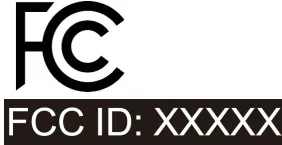
What Are FCC Requirements for Electronics?
The Federal Communications Commission (FCC) is an independent U.S. government agency responsible for managing and regULating radio communications and television broadcasting in the United States.
FCC certification ensures that products meet the technical specifications and requirements established by the FCC. This certification is granted after passing an accREDited laboratory’s testing process.
FCC certification has two primary modes: fcc sdoc and fcc id.

fcc id certification
FCC ID is mainly designed for communication products.
For wireless products, which commonly use the 2.4G frequency, FCC ID certification is typically required when entering the U.S. market.
Products with wireless signal transmission and reception capabilities must obtain FCC ID certification before being sold in the United States.
In simple terms, products with features like Wi-Fi, Bluetooth, 3G, or 4G functionality require FCC ID certification to be sold in the U.S. market.
Products Requiring FCC ID Certification
FCC ID certification applies to products with wireless functionality, such as Bluetooth earphones, Bluetooth speakers, smartphones, routers, and smart kids' watches.
Specific Product Frequency Ranges and Examples:
1. 125KHz, 13.56MHz
- Common products: Public transportation card readers, wireless chargers, access card readers.
2. 27MHz, 49MHz
- Common products: Wireless MICe and keyboards, remote-controlled toy cars.
3. 315MHz, 433MHz (for intermittent and periodic use; remote-controlled toys are prohibited in this range)
- Common products: Doorbell systems, alarm devices, remote switches.
4. 88-108MHz
- Common products: FM car radios.
5. 902-928MHz, 2400-2483.5MHz, 5725-5850MHz
- Common products: Remote-controlled toys, wireless mice, Bluetooth speakers, Wi-Fi drones, smart home devices.
FCC sdoc Certification
FCC SDoC targets standard electronic and electrical products without wireless functionality.
Typical examples include traditional household appliances and lighting equipment.
Products Requiring fcc sdoc certification
1. Audio/Visual Products
- Common products: Set-top boxes, DVD/VCD players, MP3 players, home audio systems, radios, CRT/LED/LCD televisions.
2. Personal Computers and Peripherals
- Common products: Interface cards, gaming consoles, power supplies, UPS systems, fax machines, modems, answering machines, switches, monitors, printers, keyboards, power adapters, mice, scanners.
3. Household Appliances and Power Tools
- Common products: Microwaves, air conditioners, vacuum cleaners, electric toys, rice cookers, electric shavers, hair dryers, bread toasters, massage devices, battery chargers, stoves, washing machines, induction cookers, electric food processors, small motors.
Power Tools
- Examples: Electric drills, grinders, circular saws, nail guns, pneumatic drills, refrigerators, irons, food blenders, kettles, electronic sterilizers.
4. Lighting Equipment
- Common products: Energy-saving lamps, stage lights, dimmers, converters, electronic dimming devices for stage venues, AC electronic ballasts for tubular fluorescent lamps, fixed lighting, portable lamps, embedded lamps, LED lighting fixtures, LED screens, LED power supplies/drivers.
5. Security Products
- Common products: Monitors, cameras, alarms, access control systems.
6. Toys
- Common products: Electronic toys for children.
The descriptions above are simplified examples. For specific details, our professional team can provide further assistance.
Email:hello@jjrlab.com
Write your message here and send it to us
 WEEE Registration for Waste Electrical &Electr
WEEE Registration for Waste Electrical &Electr
 MSDS Chemical Safety Testing
MSDS Chemical Safety Testing
 What Are the Differences Between UK REACH and EU R
What Are the Differences Between UK REACH and EU R
 E-Cigarette GB 41700 Compliance Testing
E-Cigarette GB 41700 Compliance Testing
 What Are the Testing Items of California Propositi
What Are the Testing Items of California Propositi
 E-Cigarette EU TPD Testing
E-Cigarette EU TPD Testing
 Testing Certification for E-cigarettes Exported to
Testing Certification for E-cigarettes Exported to
 What is Amazon US CPC Certification?
What is Amazon US CPC Certification?
Leave us a message
24-hour online customer service at any time to respond, so that you worry!




